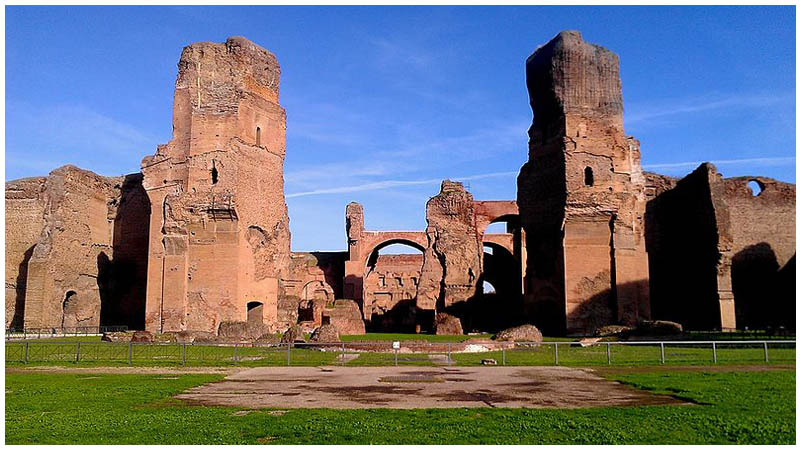Bathing was an important feature in the life of ancient Romans. While a few — extremely rich — people had a private bath, or balneum, in their home, most citizens would visit the public baths, or thermae.
The Latin word thermae actually translates as “hot springs,” and while many public baths were located at the site of a natural hot spring, which would have been viewed as having particularly beneficial or healing waters, many relied on water that was brought to the site by aqueduct.
As the city of Rome grew in size and importance, so did it’s bath houses, which are referred to in various literary sources as either thermae or balnea. They were a focal point for socializing and political discussions; a place to relax and enjoy a massage; to read or listen to poetry in the library room; and some even incorporated a gymnasion on the campus.
During the reign of Marcus Aurelius Severus Antoninus Augustus (198-217 AD), better known as Emperor Caracalla, he oversaw the creation of the second largest, and most luxurious, thermae in Rome.
Construction is thought to have been started by his father, Septimius Severus, with whom he co-ruled the empire for several years. Severus was emperor from 193-211.
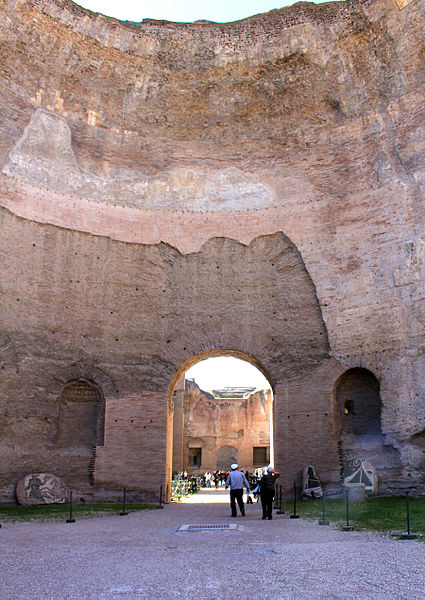
The Baths of Caracalla were built between 211, or 212, and 216, the year of their inauguration. They are located in what would have been administration district Regio XII, in the south of the city.
The ruling family also erected a number of other structures in the city, including the elaborate Septizodium and the road Via Nova.
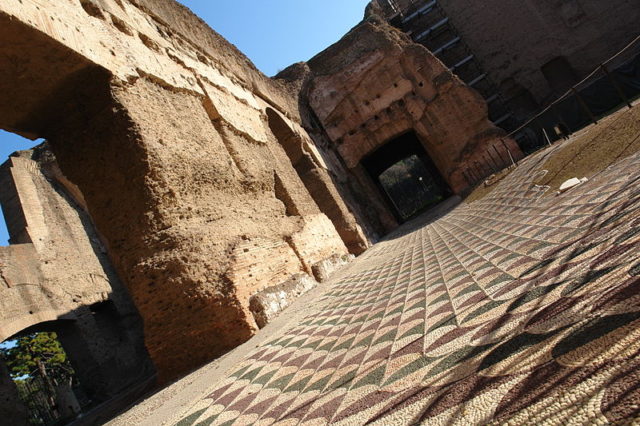
As was the tradition, the Baths of Caracalla would have been richly decorated with mosaics and sculptures. Even though they were in use from 216, the addition of lavish embellishments by Caracalla and his successors, emperors Elagabalus and Severus Alexander, meant that construction wasn’t really completed until 235.
Renovations were carried out during the reign of Aurelian, emperor from 270-275, and once more during the reign of Diocletian, who ruled from 284-305.
Rectangular in shape, the complex of the baths spread across 62 acres of land. 250 columns were erected, the tallest of which was 40 feet. The aqueduct acqua Antoniniana carried water to the baths, although its exact trajectory is unknown as only a few pieces remain.
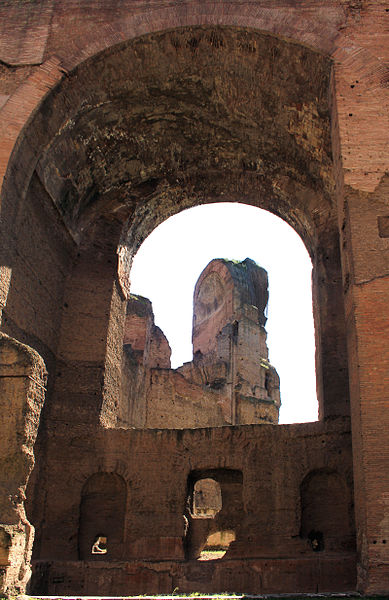
Bathing wasn’t the only activity possible within the walls of the complex. The interior was filled with additional facilities to aid relaxation and enjoyment.
There were two libraries, one for Greek texts and one for Latin, places to buy food, or take a walk.
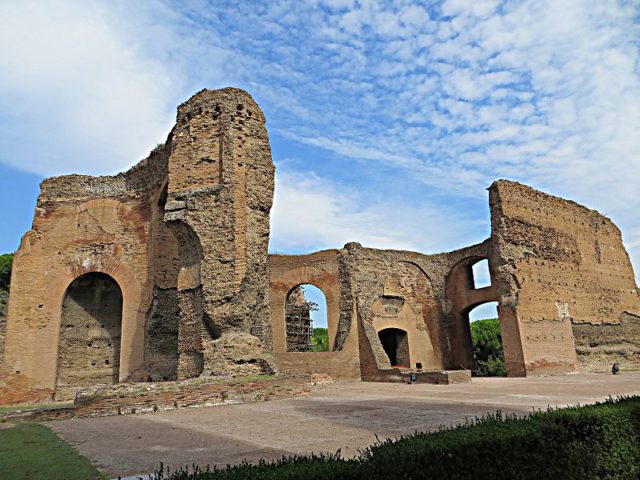
For the ancient Romans, bathing was not simply a case of just hopping into the tub. After stripping off in the apodyterium (changing room), visitors could chose to work up a sweat in the palaestra before heading for the tepidarium (warm room).
This prepared the body for the caldarium (hot room), before taking the plunge into the frigidarium to cool off. Caracala’s baths had several pools in each area, where visitors would take their time to enjoy the process.
The caldarium was a little like a modern steam room but with a hot pool in the middle; this is where richer individuals would have a slave rub olive oil on their skin and scrape it off, which was an effective way to remove dirt.
The complex also boasted an outdoor pool, 165 feet in length and 72 feet wide, where bathers could swim after the ritual of cleansing.
The complex also included a Mithraeum — a temple dedicated to the god Mithras — placed underneath the baths, alongside a number of tunnels that were used for heating and sewage.
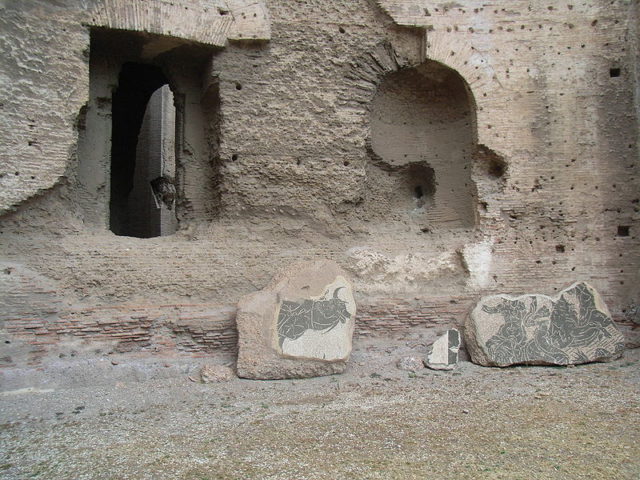
The Romans are well known for their brilliant engineering, and the baths utilized a hypocaust system, an early form of under-floor central heating, to heat the water and the rooms. The layout also made clever use of the sun to aid heating where it was needed.
Constantine the Great left his mark when he reconstructed the circular 115-feet-wide caldarium in the early 300’s. This has largely survived intact and apparently has great acoustics — it was used every summer from 1937 to 1993 by the Rome Opera, as well as hosting several concerts, most famously by the Three Tenors in 1990.
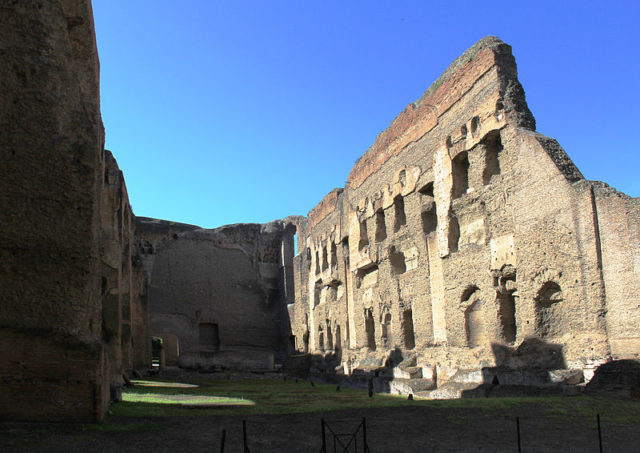
By the 5th century, as many as 6,000 to 8,000 bathers arrived on a daily basis. The baths were well established and referred to as one of the seven wonders of Rome, alongside the Circus Maximus, Via Appia, Parco degli Acquedotti, the Pantheon, Trajan’s Forum, and the Colosseum.
In 537, during the Gothic War, the city was besieged and its water supply cut off by the Ostrogoths. With no water, the Baths of Caracalla were rendered useless and were subsequently abandoned.
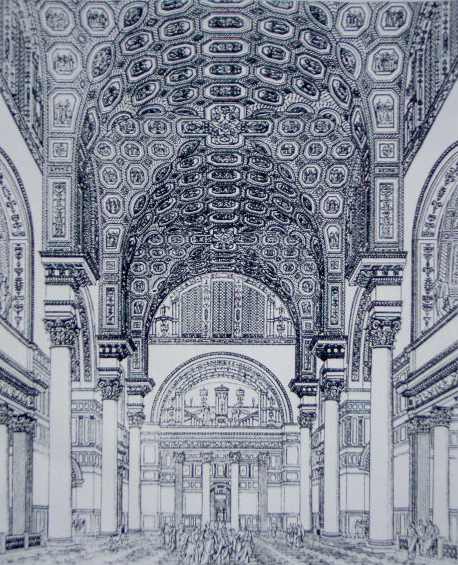
In 847, there was an earthquake that badly damaged the baths, as well as many other structures of historical importance. During the 14th century the complex was converted to vineyards, and during the 16th century, the grounds were used as a community playground for children.
Today, the baths stand in ruins. Nonetheless, they continue to attract tourists and inspire artists. Chad Stahelski was impressed by this Roman legacy and used the site as a filming location for John Wick: Chapter 2, to shoot one of the movie’s most intense scenes.
